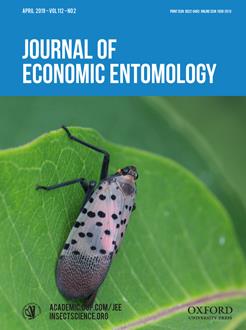Filth flies, including house flies, Musca domestica L., develop in animal manure. Adult house flies often are controlled with pesticides such as imidacloprid. How imidacloprid disseminates and persists after it contaminates manure was measured at a dairy farm. A week after application of imidacloprid via fly bait to cattle manure, a mean of approximately 4 ppm of imidacloprid, and as high as 15 ppm, was quantifiable up to 12 cm from the application site, but not farther. Laboratory experiments addressed the impact of 15 ppm of imidacloprid in manure on egg-to-adult development of house flies and on the biological control ability of a house fly pupal parasitoid, Spalangia endius Walker. In uncontaminated manure, 93% of eggs developed to adults, versus 7% in contaminated manure. In the parasitoid experiment, fly pupae were placed in contaminated or uncontaminated manure with or without S. endius. In the absence of S. endius, nearly 100% of flies emerged, with or without imidacloprid. In the presence of S. endius, only 11% of flies emerged from uncontaminated manure, versus 36% from contaminated manure; and parasitoids emerged from 82% of hosts in uncontaminated manure versus 53% in contaminated manure. These results suggest that realistic concentrations of imidacloprid in filth fly breeding habitat may interfere with house flies developing to the pupal stage, but also with parasitoids locating and utilizing house flies. However, after 1 wk, the effects on parasitoids will be low 12 cm beyond where bait was applied.
How to translate text using browser tools
19 December 2018
Dissemination of Imidacloprid Through Dairy Cattle Manure and Its Effect on the Biological Control Agent, Spalangia endius (Hymenoptera: Pteromalidae), and a Filth Fly Host, Musca domestica (Diptera: Muscidae)
Edwin R. Burgess,
Sydney M. Watkins,
Bethia H. King,
Karley Chantos-Davidson,
Aspen N. Kremer,
Jennifer C. Tournear,
Joseph Morrow,
Timothy J. Hagen,
Elizabeth R. Gaillard
ACCESS THE FULL ARTICLE
It is not available for individual sale.
This article is only available to subscribers.
It is not available for individual sale.
It is not available for individual sale.

Journal of Economic Entomology
Vol. 112 • No. 2
April 2019
Vol. 112 • No. 2
April 2019
contamination
house fly
HPLC
natural enemy
pesticide




